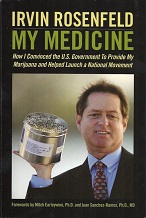What is Chronic Nonmalignant Neuropathic Pain?
Chronic nonmalignant pain is pain defined as an “unpleasant sensory and emotional experience associated with actual or potential tissue damage” lasting either (1) 3 months or longer or (2) longer than expected given a certain injury. It can result from trauma, a disease process, or an unknown cause.By adding the word “neuropathic” to the disorder name, the definition includes that the cause of pain is a direct result of damage or compression of a nerve. In contrast to “nonmalignant” pain, chronic malignant pain is associated with a severe/worsening known disease process, and is often experienced by patients with cancer.
Approximately 11% of individuals residing in the United States experience chronic nonmalignant pain, and it is therefore the leading cause of disability. Uncontrolled chronic nonmalignant neuropathic pain can be severely debilitating, and safe and effective management is essential for maintaining optimized quality of life for patients.
 Opioids are commonly prescribed for patients with chronic pain, and are a useful and effective therapy for many. However, opioid use can lead to (1) severe side effects, (2) addiction/dependence, and (3) death in cases of overdose (accidental or intentional). Although most patients with chronic nonmalignant pain who are prescribed opioids do not develop addiction/dependence, many develop abnormal/unhealthy drug-related behaviors (although the likelihood of developing these behaviors is decreased if patients are pre-screened for past addiction/dependence and alcohol/illegal drug use, and decision of whether or not to prescribe is modified given this information).
Opioids are commonly prescribed for patients with chronic pain, and are a useful and effective therapy for many. However, opioid use can lead to (1) severe side effects, (2) addiction/dependence, and (3) death in cases of overdose (accidental or intentional). Although most patients with chronic nonmalignant pain who are prescribed opioids do not develop addiction/dependence, many develop abnormal/unhealthy drug-related behaviors (although the likelihood of developing these behaviors is decreased if patients are pre-screened for past addiction/dependence and alcohol/illegal drug use, and decision of whether or not to prescribe is modified given this information).
Cannabinoid therapies (including whole-plant) may be an effective treatment option for chronic pain, and have the potential to work as an add-on therapies to help reduce patients’ opioid dosages. In some anecdotal cases, whole-plant cannabis has been reported to be able to fully replace opioid use (although these results should not be expected).
Additionally, a study published in October 2014 in JAMA Internal Medicine found that opioid-related deaths were 25% lower in states where medical cannabis is legal. Although this study found an association, rather than a cause-effect relationship, given cannabis’ highly favorable safety profile (especially in comparison to opioids), the results warrant further research.
Results of the Review
A systematic review of 13 studies on the topic of cannabinoid therapy use for chronic neuropathic pain, published in the Winter 2015 volume of Journal of Oral & Facial Pain and Headache, found that “[e]valuation of these studies suggest[s] that cannabinoids may provide effective analgesia [i.e. pain relief] in chronic neuropathic pain conditions that are refractory [i.e. not fully responsive] to other treatments.”
To gather a sample of papers to review, the researchers used several online databases, as well as print sources dating back to 1950. Termed used in the searches included:
- marijuana
- marihuana
- cannabis
- cannabinoids (endogenous, phytocannabinoids found in cannabis, synthetic cannabinoids)
- nabilone (a synthetic cannabinoid that functions like THC, currently FDA-approved for the treatment of chemotherapy-induced nausea and vomiting)
- dronabinol (synthetic THC, currently FDA-approved for the treatment of chemotherapy-induced nausea and vomiting)
- delta- 9-tetrahydrocannabinol (THC, a phytocannabinoid)
- cannabidiol (CBD, a phytocannabinoid)
- ajulemic acid (a synthetic cannabinoid that is a breakdown product of THC, has demonstrated an ability to provide pain and inflammation relief without producing psychoactive effects)
- pain
- chronic disease
- neuropathic
The researchers limited the search to randomized placebo-controlled trials (the gold standard for clinical trials, allows for an examination of cause-effect relationships), and reduction in pain intensity and harmful events were compared among the studies.
While 24 studies using the terms noted above were found- 11 did not fit the criteria of being (1) a randomized placebo-controlled trial, (2) regarding chronic nonmalignant neuropathic pain, or (3) did not assess pain reduction, and were therefore excluded from consideration. The remaining 13 studies that were analyzed were rated using the Jadad Scale, which is used to assess the quality of clinical trials and, as noted by the researchers, “to measure bias in pain research”.
 The researchers found that, “[c]annabis-based medicinal extracts used in different populations of chronic nonmalignant neuropathic pain patients may provide effective analgesia in conditions that are refractory [i.e. not fully responsive] to other treatments” and that “the vast majority of adverse events listed were considered minor in nature”.
The researchers found that, “[c]annabis-based medicinal extracts used in different populations of chronic nonmalignant neuropathic pain patients may provide effective analgesia in conditions that are refractory [i.e. not fully responsive] to other treatments” and that “the vast majority of adverse events listed were considered minor in nature”.
Overall, improvements in “sleep quality, appetite, nausea, and anxiety” were also noted.
Conclusion
This review, conducted on studies that have examined the use of cannabinoid therapies for chronic nonmalignant neuropathic pain, provides important details for the consideration of the place for cannabinoid use in symptom/disease/disorder treatment. While unable to draw new cause-effect relationships from systematic reviews, these types of studies help to answer a broad question, while limiting bias that is often found in individual papers.
Given that this review was conducted in accordance with appropriate scientific methodology, and that a benefit to the use of cannabinoid therapies was found (with minimal adverse side effects), this study adds to growing evidence that cannabinoid therapies (including phytocannabinoids and isolated/synthetic cannabinoids) may be safe and clinically useful therapies in the management of chronic nonmalignant neuropathic pain.
According to the authors, increased research will help to determine optimal (1) specific cannabinoids (e.g. phytocannabinoid, synthetic, endogenous modulation), (2) delivery methods, and (3) length of treatment.
For information on reasonable expectations and safety in considering whole-plant medical cannabis use, as well as how you can advocate to move cannabis out of the Schedule I controlled substance classification in order to increase research on phytocannabinoids in the United States, click here.
Latest
Coronavirus Strikes Massachusetts Cannabis Company Employees
Reassessing the Essential: Cannabis in the Time of a Pandemic
5 Reasons To Try Aspen Valley CBG Flower (30% Off)
High Times Cannabis Cups Go Virtual In Wake Of Coronavirus Pandemic
Drug Enforcement Administration Proposes Plan To Expand Cannabis Research
Ghana Legalizes Cannabis For Medicinal And Industrial Uses
The cheapest legal weed in Canada: Discover these cannabis ‘value brands’
Cannabis and coronavirus: Here’s what you need to know
cannabis designs
The Best Of
WHO Rules CBD Should Not Be a Scheduled Drug

Dr Cristina Sanchez PhD video interview on medical marijuana and cancer

Biochemist Dennis Hill interview; Cannabis oil as a cure for cancer.

The unofficial World Record holder for cannabis smoking part 1





